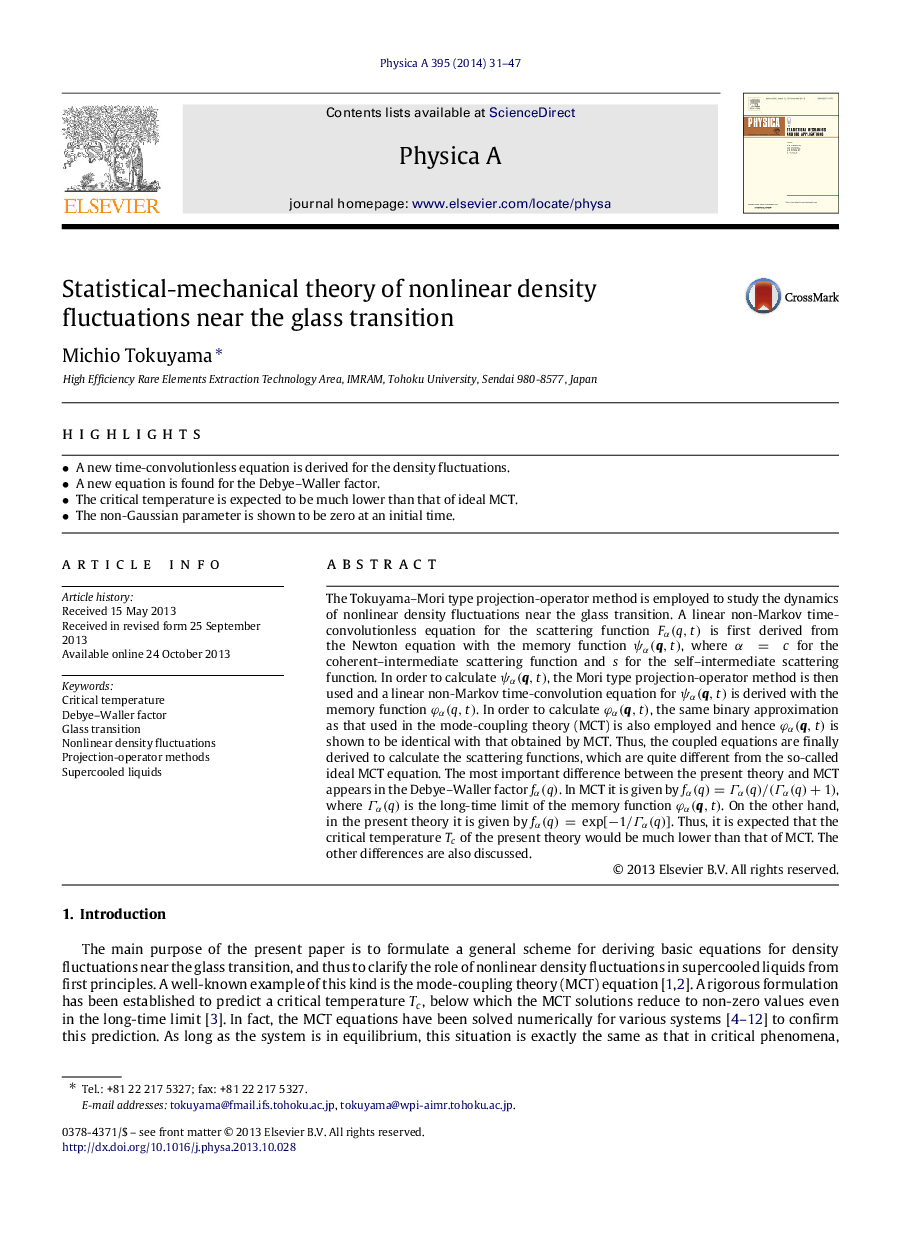| Article ID | Journal | Published Year | Pages | File Type |
|---|---|---|---|---|
| 7381799 | Physica A: Statistical Mechanics and its Applications | 2014 | 17 Pages |
Abstract
The Tokuyama-Mori type projection-operator method is employed to study the dynamics of nonlinear density fluctuations near the glass transition. A linear non-Markov time-convolutionless equation for the scattering function Fα(q,t) is first derived from the Newton equation with the memory function Ïα(q,t), where α=c for the coherent-intermediate scattering function and s for the self-intermediate scattering function. In order to calculate Ïα(q,t), the Mori type projection-operator method is then used and a linear non-Markov time-convolution equation for Ïα(q,t) is derived with the memory function Ïα(q,t). In order to calculate Ïα(q,t), the same binary approximation as that used in the mode-coupling theory (MCT) is also employed and hence Ïα(q,t) is shown to be identical with that obtained by MCT. Thus, the coupled equations are finally derived to calculate the scattering functions, which are quite different from the so-called ideal MCT equation. The most important difference between the present theory and MCT appears in the Debye-Waller factor fα(q). In MCT it is given by fα(q)=Îα(q)/(Îα(q)+1), where Îα(q) is the long-time limit of the memory function Ïα(q,t). On the other hand, in the present theory it is given by fα(q)=exp[â1/Îα(q)]. Thus, it is expected that the critical temperature Tc of the present theory would be much lower than that of MCT. The other differences are also discussed.
Related Topics
Physical Sciences and Engineering
Mathematics
Mathematical Physics
Authors
Michio Tokuyama,
